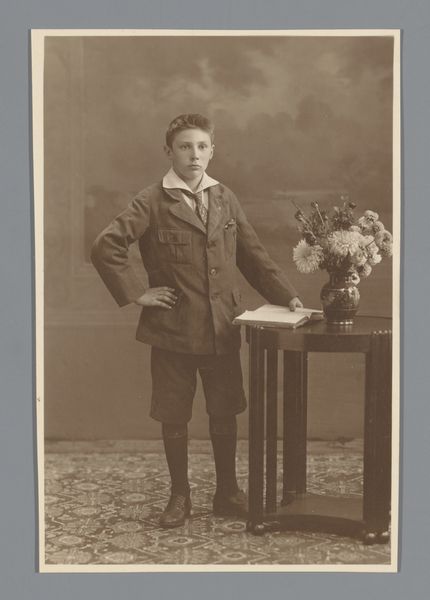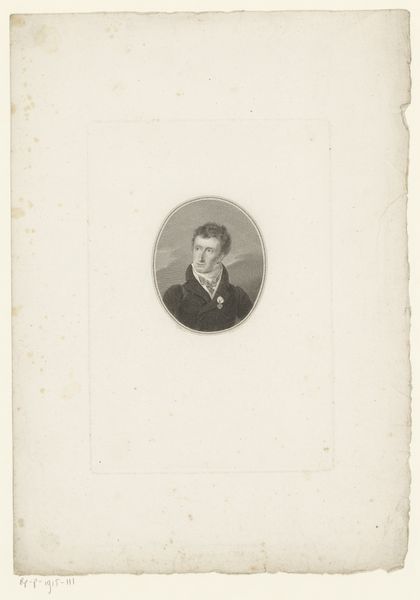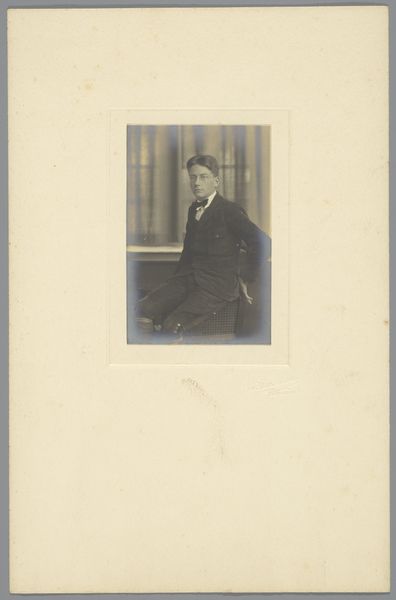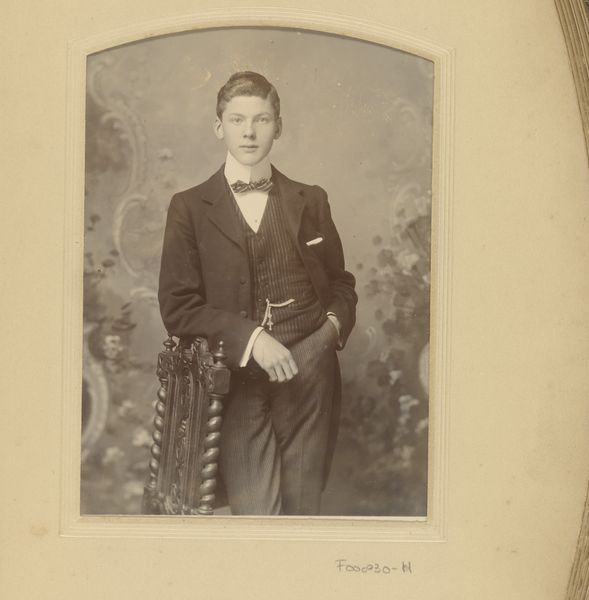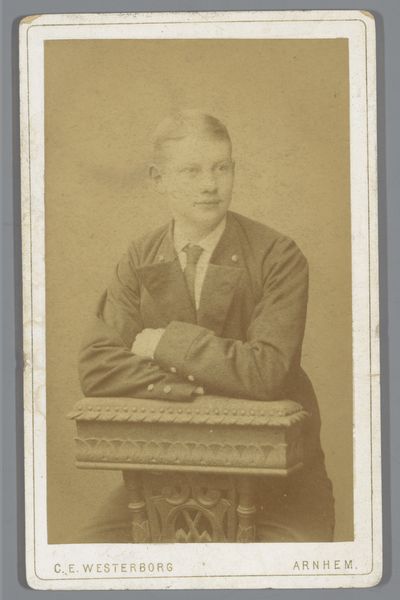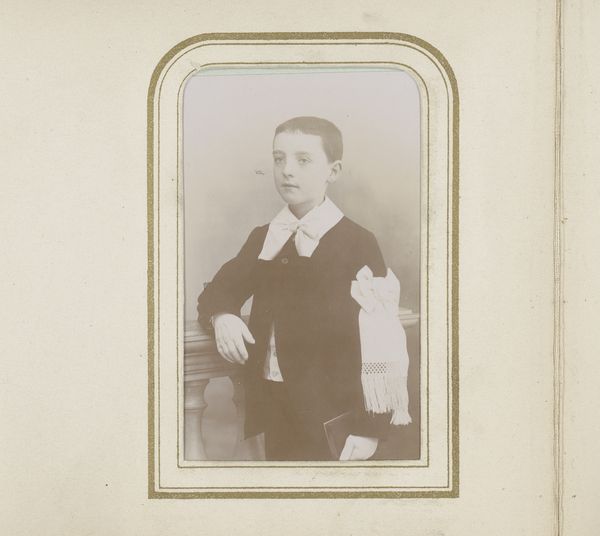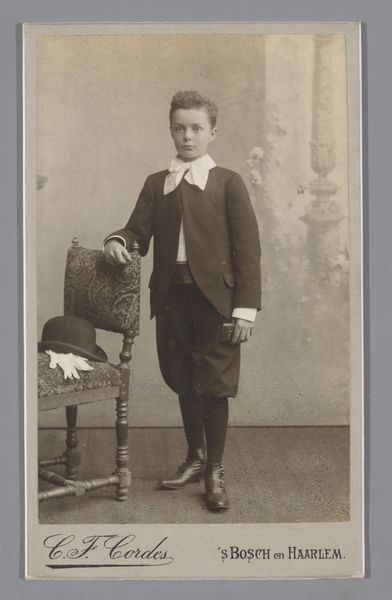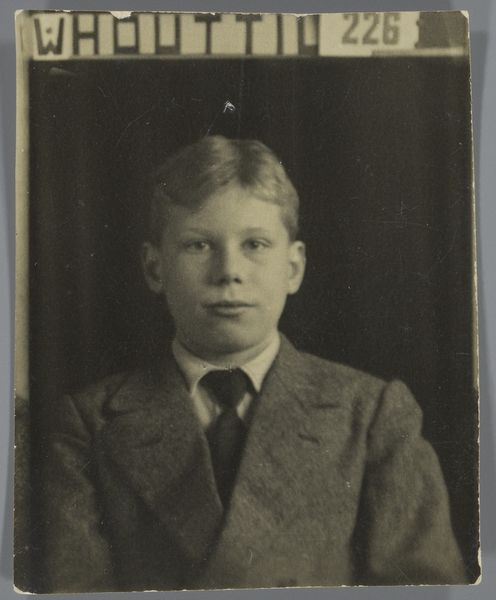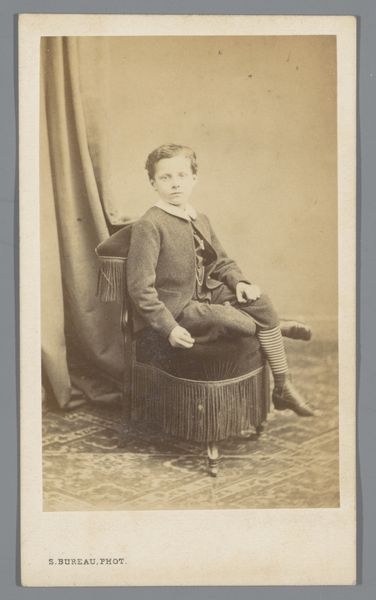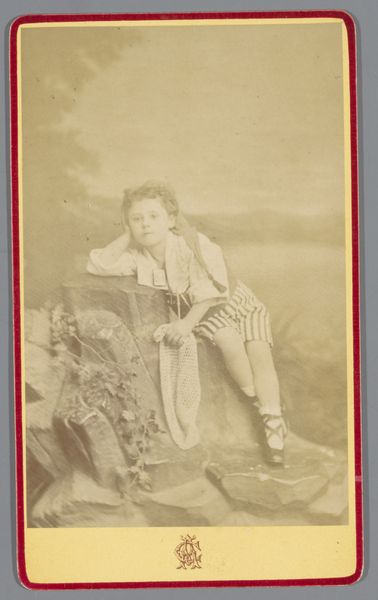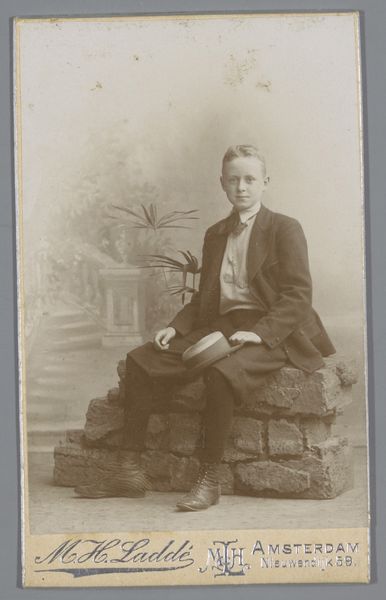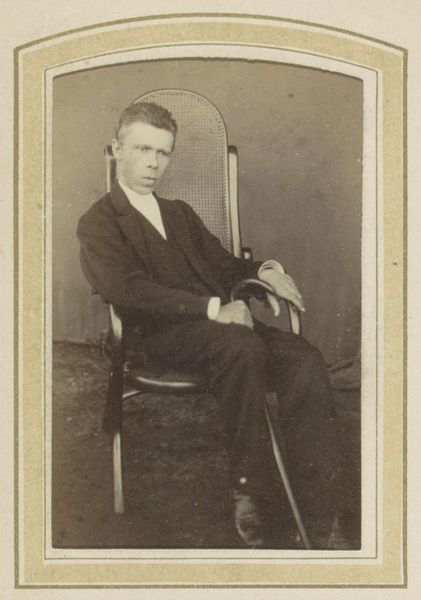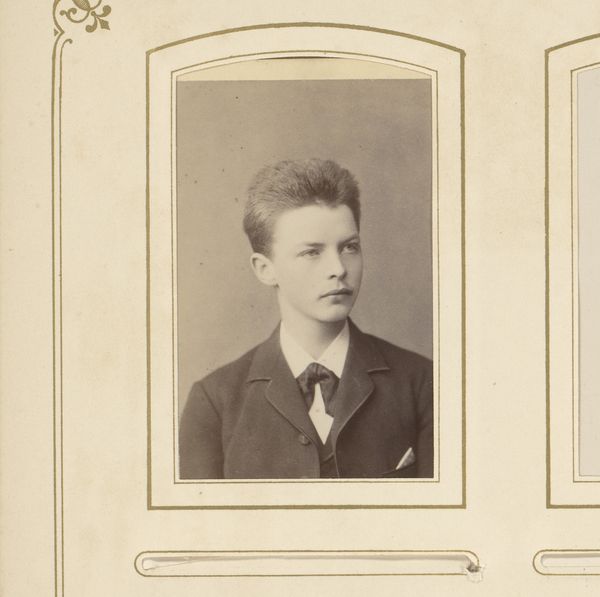
photography
#
portrait
#
aged paper
#
pictorialism
#
photography
#
historical photography
#
geometric
#
19th century
Dimensions: height 137 mm, width 96 mm
Copyright: Rijks Museum: Open Domain
Curator: What a remarkably preserved image. Here at the Rijksmuseum, we have a photograph titled "Portret van David Williams op 11-jarige leeftijd," attributed to The Van Dyck Studios and believed to have been created sometime between 1880 and 1920. Editor: My first impression is of formality tinged with youth. He's dressed so meticulously, but there's still an innocence in his expression that the severe pose can't quite conceal. Curator: It certainly captures a specific societal expectation for young boys of that era. Notice the tweed suit; it suggests a certain social standing, indicative of the Victorian or Edwardian emphasis on class and outward presentation. Editor: Absolutely. And look at the patterned handkerchief he holds. It seems insignificant, but those small, deliberate details in portraits often carry a psychological weight. What message do you think that conveys, beyond mere etiquette? Curator: That's an insightful question. Handkerchiefs at that time had intricate social uses, indicating hygiene, courtship and status, but that one, to me, whispers a story of control and decorum in the late 19th century photography as it tries to navigate childhood in an era of industrialization. Editor: Yes! Almost like a physical representation of learned social behavior. Consider the geometric decorative framing also – I read those symmetrical details like emblems. Order and symmetry are projected as the defining traits that must surround his development, culturally speaking. Curator: I agree, even the soft focus technique lends it a sentimental glow. Pictorialism emerged partly as a rejection of straightforward documentation. These photographers weren’t just recording, they were curating a vision. It was not enough to represent one’s likeness but also how one ought to behave. Editor: This has an undeniable historical appeal. That intersection of the sitter's intended image versus his personal sense of self interests me the most. Thanks for sharing this one. Curator: Likewise. It highlights how photographic portraiture from that period serves both as an artifact of identity and a lens through which we can study social constructs of youth and status.
Comments
No comments
Be the first to comment and join the conversation on the ultimate creative platform.
